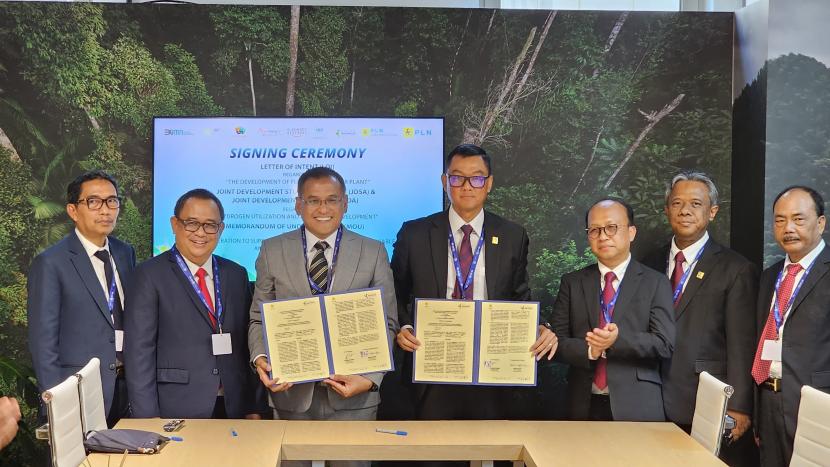REPUBLIKA.CO.ID, DUBAI -- PT Pupuk Indonesia (Persero) together with PT PLN (Persero) signed a Joint Development Study Agreement (JDSA) or a joint development study agreement related to the integrated green hydrogen and green ammonia ecosystem in the industrial area of PT Pupuk Kujang. The signing took place in conjunction with COP28 or the UN high-level conference in Dubai, on Sunday (3/12/2023).
President Director of Pupuk Indonesia Rahmad Pribadi, mentioned that the direction of the Company's development in the future is to become an integrated global fertilizer and petrochemical industry. With Pupuk Indonesia Group's ammonia production capacity of about seven million tons per year, Pupuk Indonesia has the potential to become a major player in this industry.
“Pupuk Indonesia has the potential to become a global player in the green ammonia industry, especially with Indonesia's strategic position that can become a hub of green hydrogen and green ammonia,” Rahmad explained, in a written statement on Monday (4/12/2023).
This cooperation, Rahmad continued, is an effort to expand cooperation on the development of green hydrogen and green ammonia ecosystems in Indonesia. Previously, Pupuk Indonesia and PLN also collaborated for the development of the Green Industrial Cluster in the Special Economic Area (KEK) Iskandar Muda Indutrial Area (IMIA) in Lhokseumawe Aceh, as well as the development of green hydrogen and green ammonia in the Gresik Petrochemical industrial area in East Java.
According to Rahmad, the development of green or carbon-free industrial ecosystems is a form of implementation of the principles of Enviromental, Social, and Governance (ESG) in Pupuk Indonesia. At the same time, a real step according to the debarbonization roadmap to support the Indonesian government's goal of achieving zero carbon emissions by 2060.
The development of green hydrogen and green ammonia is becoming increasingly relevant as the need for clean ammonia for energy is predicted to increase significantly. In addition, the presence of green ammonia can also support the sustainability of the supply of fertilizer raw materials. Since ammonia is the main raw material of fertilizers Urea, NPK, ZA, and so on.
He further explained that the development study of green hydrogen and green ammonia together with PLN will be carried out in two stages. First, the study covers the production of green hydrogen at a production facility owned by PLN for later distribution to the green ammonia plant facility in Pupuk Kujang industrial area.
Subsequently, green hydrogen will be converted to green ammonia at the Pupuk Kujang production facility, to be redistributed to the green ammonia storage facility at PLN's Steam Power Plant (PLTU) to be used as co-firing fuel.
The second phase includes the development of green hydrogen facilities at the site of the green ammonia production facility in Pupuk Kujang, supported by PLN with Renewable Energy Certificate (REC) service. Next, the implementation of green hydrogen to green ammonia conversion by Pupuk Kujang using Pupuk Kujang's green ammonia production facility. And finally, the utilization of green ammonia for the purpose of co-firing PLN's power plants and export needs.
“This cooperation is carried out in order to develop clean energy in Indonesia through the development of green ammonia using the existing Pupuk Indonesia facility. We hope that this joint study will encourage Indonesia to become a pioneer in developing green energy solutions and achieve net-zero emissions targets in 2060,” Rahmad said.



